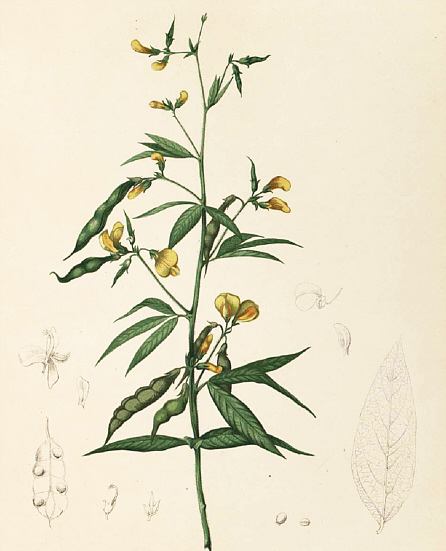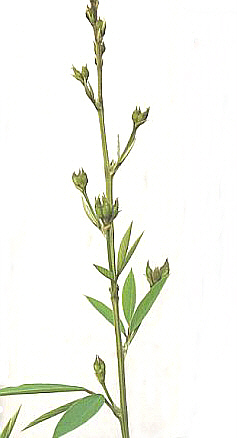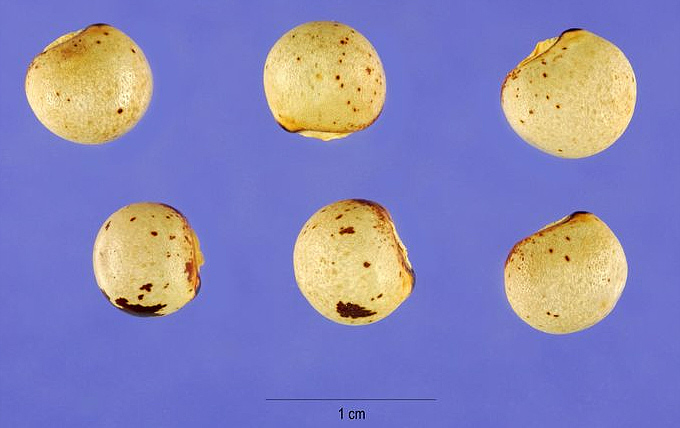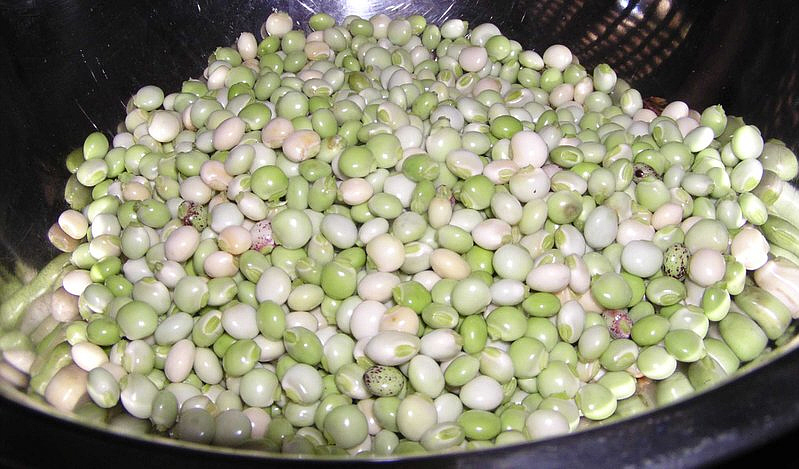

Zitierweise / cite as:
Carakasaṃhitā: Ausgewählte Texte aus der Carakasaṃhitā / übersetzt und erläutert von Alois Payer <1944 - >. -- Anhang A: Pflanzenbeschreibungen. -- Cajanus cajan (L.) Huth. -- Fassung vom 2007-07-12. -- URL: http://www.payer.de/ayurveda/pflanzen/cajanus_cajan.htm
Erstmals publiziert: 2006-07-12
Überarbeitungen:
Anlass: Lehrveranstaltung SS 2007
Dieser Text ist Teil der Abteilung Sanskrit von Tüpfli's Global Village Library
WARNUNG: dies ist der Versuch einer
Übersetzung und Interpretation eines altindischen Textes. Es ist keine
medizinische Anleitung. Vor dem Gebrauch aller hier genannten Heilmittel wird
darum ausdrücklich gewarnt. Nur ein erfahrener, gut ausgebildeter ayurvedischer
Arzt kann Verschreibungen und Behandlungen machen!
Falls Sie die diakritischen Zeichen nicht dargestellt bekommen, installieren Sie eine Schrift mit Diakritika wie z.B. Tahoma.
Verwendete und zitierte Werke siehe: http://www.payer.de/ayurveda/caraka0001.htm

Abb.: Cajanus cajan (L.) Huth
[Bildquelle: Wikipedia]

Abb.: Cajanus cajan (L.) Huth
[Bildquelle: Wikipedia]

Abb.: Cajanus cajan (L.) Huth
[Bildquelle: Steve Hurst @ USDA-NRCS PLANTS Database/Wikipedia]

Abb.: Cajanus cajan (L.) Huth
[Bildquelle: Wikipedia]
Drury:
"Cajanus Indicus (Spreng.) N. O. Leguminosae. Pigeon-pea, Eng. Thovaray, Tam. Caudaloo, Tel. Toor, Hind. Dal Urur, Bins.
Description.—Shrub, 3-6 feet, softly pubescent; leaves pinnately trifoliolate; leaves oval, lanceolate, mucronate; calyx campanulate, somewhat bilabiate ; lips nearly equal in length, upper one shortly bifid, lower one 3-partite; segments slightly curved upwards; apices recurved; corolla papilionaceous; petals equal in length; vexillum broad, bi-callous at the base; keel falcate; racemes axillary; pedicels slender, in pairs; legumes hirsutely pubescent; flowers yellow. Fl. Oct—Nov. — W. & A. Prod. i. 256.-------Peninsula. Bengal Assam.
Of this shrub there are two varieties which differ by the colour of the vexillum alone.
- egapoo Thovaray, Tam.—Yerray caudaloo, Tel.—Lai Toor, Hind.—Vexillum of a uniform yellow colour on both sides.—C. flavus, Dec.—Cytisus cajan, Linn.— Roxb. Fl. Ind. iii. 325.
- Maenthoveray, Tam.—Conda Candaloo, Tel.—Paoudke-Toor, Hind.—Vexillum purplish, and veined on the outside, yellow on the inside.—C. bicolor, Dec.—Cytisus pseudo cajan, Jacq.—Rheede, Mal. vi. t 13.
Economic Uses.—The seeds are much esteemed by the natives, who hold them third in rank among their leguminous seeds, though they are apt to produce costiveness. Cattle are very fond of the tender parts of the plant, both green and dry. The dried stem makes excellent fuel, and is well adapted for producing fire by friction.— (Roxb.) That which is known as the small "Toor" ripens half as soon again as the larger one. Some varieties are remarkable for the gaudy colours of their orange and red-spotted flowers. The pulse is chiefly eaten mixed with rice, a mess known as kedjari. The best Toor is sown in alternate drills' with Sorghum vulgare, which ripens first, and is cut while the Cajanus is yet small. It then remains two or three months longer, and is reaped at the end of the harvest. The stalks are strong and woody, and well adapted for making charcoal required in gunpowder manufacture.—W. Elliott."
[Quelle: Drury, Heber <1819 - 1872>: The useful plants of India : with notices of their chief value in commerce, medicine, and the arts. -- 2d ed. with additions and corrections. London : Allen, 1873. -- xvi, 512 p. ; 22 cm. -- s.v.]